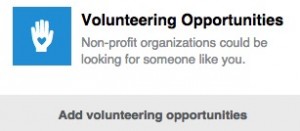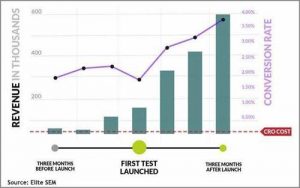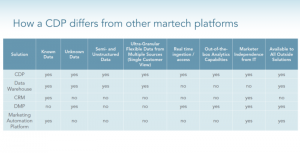We’ve talked a lot about the importance of visual engagement for small business marketing. From beautiful photography to engaging color palettes, a business’s visual imagery plays into its marketing success. In fact, “visual content is more than 40x more likely to get shared on social media than other types of content.” For small businesses, integrating visual content into their business and marketing strategies is essential to stay competitive and relevant in the marketplace.
Today, we’re going to hone in on one type of visual tool: infographics. Infographics have risen in popularity over the past few years for a number of reasons. They provide an immense amount of information in an easy to understand and easy to retain way. Here are three reasons why you should jump on the infographic bandwagon if you’re interested in growing followers and brand awareness:
- People are bombarded by information each and every day. On average, a person only reads 20% of the text on a page. However, eye-tracking studies indicate that information-rich images capture readers’ attention. When the images are relevant, readers spend more time looking at the images than they do reading text on the page;
- Information accompanied by images is much easier for people to recall and helps readers break down complex information. People are more likely to remember what you’ve shared with them, and more importantly remember your brand!

image courtesy of NeoMan Studios
- Since infographics are so appealing, people feel compelled to share them. They’re three times more likely to be shared and liked than any other content on social media. The ROI for infographics is incredible and well worth the upfront time and resources.
Infographics communicate with your viewers in a variety of ways and embed information into people’s memories much more significantly than text-only information.
How do you go about creating a terrific infographic? Fear not, you don’t need graphic design prowess to make stimulating images. Simply follow these four steps and you’ll be on your way to infographic success:
Select the Subject
You’re in tune with what your target audience finds interesting. Search through trending topics or evergreen industry–related matters to determine what will be of greatest interest to your audience. While this sounds incredibly straightforward, it can be easy to get off topic when creating an infographic. Setting your subject matter from the get-go will help you remain focused during this process.
Do Your Research
A good infographic has three critical components: competitive assessment, a unique story, and facts and figures. Before you begin crafting your infographic, see what your competitors are saying about the topic and how they’re presenting their content. Are they text-based? Utilizing video or infographics, too? Take note of the content, presentation style, and color schemes. Remember Coco Chanel’s famous words:
“In order to stand out, you must be different.”
Research what’s already been published so you can develop your own look and narrative.
Framing your information in an innovative and fresh way is the only means to building an engaging infographic. Find the angle others haven’t yet touched and share your interpretation of the data. Surprising facts or hidden features are popular infographic stories because they immediately attract the reader’s attention because they provide new information. Whatever you decide, ensure you’re not replicating what someone else has previously distributed.
Infographics are nothing without their numbers! Gather statistics, reports, and study findings to construct the meat of your infographic. These data points are the essence of your infographic as they embody what you’re trying to impress upon your audience. While the ideal number of stats in an infographic varies, a good rule of thumb is to include between 12 and 25 facts. This provides enough information to assemble a substantial graphic, yet does not appear overwhelming to the reader.
Design your infographic
Now comes the fun part: designing the image! Whether you’re a graphic design savant or a technological newbie, there are ways to develop infographics on a limited budget.
Outsourcing infographics to freelancers is an efficient way to get a professionally designed graphic for a small cost. Reputable sites, such as UpWork and Dribble, connect you with authorized contractors who are available for jobs of any size. These sites also allow you to set your price point so you determine the job scale and rate before any work begins.
When teaming up with freelancers, it’s necessary to provide a thorough scope of work and include as many details as possible from the beginning. This is the document the freelancer will work off of to develop the infographic, so setting context, target audience demographics, a summary of your business, and specific layout instructions and color palettes help your freelancer meet your needs on the first try.
If you want to DIY, there are a host of free and low-cost tools to help you develop the infographic of your dreams. Pagemodo, Info.gram, Easel.ly and Piktochart are great design resources for your infographic.
Before you begin using these programs, make sure you have clearly laid out your color scheme and key points for the infographic. This outline should mirror what would be included in the scope of work if you were working with freelancers. Again, it’s easy to get distracted when you get into graphic design, so cementing these points before you begin will save you time in the end.
DIY options are great for those who have extra time to produce infographics or are skilled in graphic design. You should consider this extra time and build it into your timetable to guarantee you meet your infographic deadline. If you’re squeezed for time and resources, outsourcing this kind of project would be the most time efficient option.
Review, publish & share
Before you publish your infographic, review it. Check for spelling errors, confirm citations and references are present, and give it a once-over for aesthetics. Your eye should be drawn to the images and move through the information seamlessly. If you’re getting stuck at any particular spot, consider revamping it, either with different typography, colors or adding white space.
Once every ‘i’ is dotted and ‘t’ is crossed, publish your infographic! Get that piece of work into the world and share it with your network. Encourage your followers to share or retweet it, as well. To ensure quality, it’s useful to include an embed code along with the infographic. This way, people can share the image on their blogs, within emails, or on social media without compromising the clarity and quality of the image.
Infographics are not just a one-and-done thing, either. You can share snippets of information across your social media and link back to the full graphic. People like bite-sized pieces of information, and one or two facts or stats from your infographic are enough to lure readers into clicking the full link. A good infographic can provide weeks or months worth of content for your business.
A compelling infographic can be used in so many ways and has much greater staying power than many other types of content. Use these four tips to create original content that can generate 100s of backlinks from one original piece of content.
Digital & Social Articles on Business 2 Community(57)
Report Post







